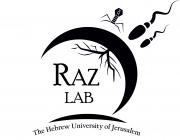Our overall goal is to advance knowledge and propose novel therapeutic approaches focused on the function of the ovary, the uterus and the placenta, via a multidisciplinary approach which combines basic research and clinical methods.
The current main research topics in my laboratory are:
-
Development of non-surgical sterilization methods
-
We are committed to developing an effective non-surgical sterilization method. We extensively explore the ovarian reserve regulation by RNA-seq and next-generation sequencing (NGS) methods, in mice, cats, and canines (Domestic dog; Foxes; Coyotes). This approach is expected to build a strong scientific background relevant for the development of non-surgical sterilization methods, by controlled alteration of the ovarian reserve; either keep it "completely locked" or alternatively, induce a massive release of all oocytes to deplete the reserve. Currently, research efforts are mainly directed to targeting the gonads by in-vivo phage display technology in mice model, development of viral vector vaccine that will cause permanent sterilization, and evaluating the effects and the practical application of anti-GnRH vaccine (Gonacon) in cats.
-
The association between animal welfare and the reproductive system
-
Improving animal welfare may potentially enhance swine farms economics. The pig industry is based on high reproductive productivity, which can be evaluated by parameters such as farrowing rate, litter size, and the rate of pregnancy losses. We found that in comparison to full restraint, group housing of gestating sows improves reproductive performance. Utilization of free-family crates improves piglets' survival and decreases chronic stress in sows and their piglets. We also found that avoiding tail docking, teeth clipping and surgical castration (using anti-GnRH vaccine as an alternative), increases survival and health, improve welfare, as well as slaughter weight.
-
Improving reproductive health and fertility in dairy cows
-
Post-partum uterine inflammatory diseases (metritis and endometritis) are prevalent in bovine dairy herds, and are responsible for major economic losses by affecting milk production and reproductive performance. We investigate the uterine involution in healthy cows and in cows suffering from uterine diseases, in regards to uterine and vaginal bacterial communities (by bacterial 16S ribosomal DNA Targeted Amplicon Sequencing), the immune host reactions to these communities (histology, cytology, and RNA Sequencing), as well as the influence of metabolic and endocrine regulation on uterine health and reproduction of post-partum cow. In addition, we examine treatment regimens for superovulation and estrus synchronization in order to improve embryo transfer success rates.
-
Investigating human prenatal placenta conditions
-
The placenta mediates the transfer of respiratory gases, water, ions, and nutrients between mother and fetus, provides an immunological interface for fetal allograft survival, and secretes a vast array of signaling molecules to optimize pregnancy physiology. The maladapted placenta is predisposed to clinical syndromes in humans, characterized by sub-optimal fetal growth (IUGR), or hypertensive disorders such as preeclampsia (PE), which may jeopardize the fetus and mother. In a set of studies initiated in my laboratory, we examine the hypothesis that the placenta maternal-fetal interface provides a potential source of molecular biomarkers, accessible via the maternal circulation, which could be used for early detection of placental abnormalities.

